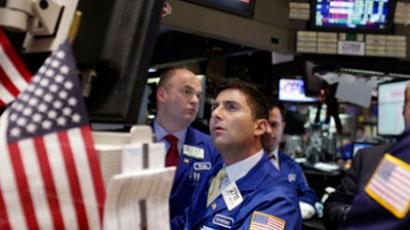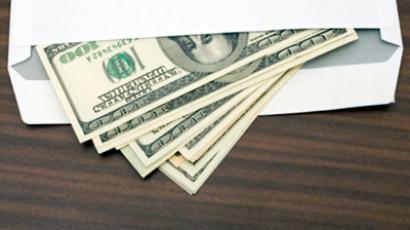Global selloff continues on the back of U.S. and Eurozone fears
With global financial markets witnessing the worst sell-off since the middle of October 2008, on the back of EU debt concerns and fears of a double dip recession in the US, Business RT spoke with Manoj Ladwa, Senior Trader at ETX capital.
RT: Is it a sign of another recession or just an overreaction on the latest data?ML:“No I think there is a very real possibility that the U.S., certainly the U.S., and maybe even other countries around the globe, could be heading back into a recession.This certainly looks like a contraction across the board. Now, what exactly is happening across the glove?Well, certainly with the U.S. we have GDP numbers which came in lower last week, employment numbers coming out today.Less than 100 thousand jobs are expected to be added for the previous month.This is not enough to bring unemployment down.Unemployment sits at 9.2% for the U.S. and it is likely that that could continue to creep higher.Also within the Eurozone as well the sovereign debt issue seems to be spreading to the other countries as well.Italy and Spain are major factors, their ten year yields – the amount that they are paying on their debt is sititng at 6.3%.For the other countries in the Eurozone, when they reach 7% that is when they sought a bailout.And again we have got quantitative easing has come to an end.QE2 came to an end last month and it is almost a delayed reaction to that, there is no money being pumped into global economies and therefore the markets start to come back down again.”RT: Would you call it a panic?ML:“Well it does feel like there is some panic selling going on.There has been over the last few days or so.We are seeing exaggerated moves to the downside and increased volatility as well, which is typical of panic selling.But then, asset levels get down to very cheap levels, they go to extremes, and then you start to see value investors coming in and buying up stock very cheaply as well. So there is some panic selling going on but there is also some cooler calmer heads out there buying undervalued assets.”RT: What assets will investors choose as a haven now?ML:“Well they are going for stocks that will have decent amounts of cash on the balance sheets.Strong balance sheets, that pay a decent yield.Blue chip companies that have been around for decades and are likely to continue to be around for the foreseeable future.And they are also going for companies that are into gold.Gold is going fantastic at the moment, it carries on up and up.It is up even today.Not too far away from that $1700 level, and the market supports gold at the moment.”RT: How can the role of Russian markets change in this respect?ML:“Well Russia has had a fantastic run, looking at the MICEX it has had a great run over the last few weeks or so. It has slowly started to come off, it is coming off from the highs, and with increased amounts of exposure to U.S. debt, with a high amount of exposure to oil and gas markets I feel that there is near term downside for Russian equities to be had.But when the recovery comes, and it will come at some point, then the Russian market does seem very well positioned to benefit quite significantly from it.”














